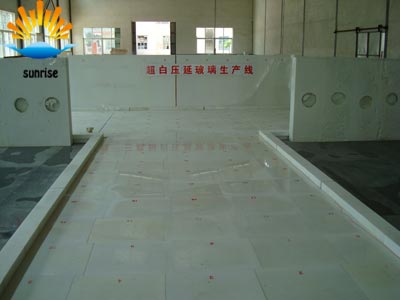Precautions for Fused Zirconium Corundum Pool Wall Bricks in Heating
2019-08-09
Sunrise Refractory Co., ltd. is a professional manufacturer and supplier of refractory products in China's refractory base. Our company is China's largest fused zirconium corundum bricks manufacturers. Besides fused zirconium corundum bricks, Our major products are also including refractory bricks, insulating bricks, refractory castable, refractory mortars, high alumina brick, high alumina castable, ceramic fiber blanket, ceramic fiber board, alumina ceramics and other industrial ceramics.
Today Sunrise Refractory Company will share with you the precautions when heating fused zirconium corundum bricks.
During the heating process of the fused zirconium corundum pool brick, when the temperature is between 0 and 1100 °C, the brick gradually expands linearly with the increase of temperature. In the process, the expansion amount is about 0.8%, and the temperature is at 1100. At 1200 °C, the monoclinic ZrO2 in the brick body is transformed into the tetragonal ZrO2, and the brick body shrinks with the change of volume. The bus expansion rate is reduced from 0.8% to 0.6%; when the temperature is higher than 1200 At °C, as the temperature rises, the bricks begin to expand again; at 1600 °C, the overall expansion characteristics of the wall bricks are not large, and the average expansion coefficient is about 7×10^-6/°C.
During the roasting kiln, the large tensile stress appears in the non-insulated area above the brick wall, close to the cold side of the brick, and increases with increasing temperature until the temperature is stable. When the cooling wind is started, the tensile stress of the brick body has a short-term peak. Therefore, when the stress is small, that is, when the temperature of the kiln is lower than 700 ° C, the wind is gradually increased, and the number of cracks generated is relatively small. Because of the reason of the lower layer insulation, the force distribution of the stress in the longitudinal direction of the pool wall is larger than that in the vertical and thickness directions of the pool wall, and often exceeds the tensile strength limit of the brick. Therefore, longitudinal cracks generally appear in the wall brick during the kiln process.

Generally, it occurs in a period of time after the cooling air is turned on and the temperature of the kiln is 950-1200 °C. The crack develops to the thickness and vertical direction of the brick. When the temperature of the kiln is 900-1200 °C, the heating rate should not be too fast. Generally, the requirement is no more than 15 °C / h. When the internal temperature of the brick body is greater than 1000 ° C, the brick body shows a plastic body, which can absorb the generated stress and crack, and the crack is also closed. Cracks generated in the kiln do not spread to the hot and insulated areas of the brick.
Due to the design and bricklaying, the expansion joints or partial seams between the brick walls are not tightly attached. During the roasting process, the heat is scattered at the straight seams, the temperature of the brick edges rises, and the tensile stress is from the bricks. The outer surface moves toward the inside and changes the stress, which is a risk of horizontal cracking. Therefore, the pre-arrangement and precision machining of the wall bricks are also very important.
There are many precautions in the use of fused zirconium corundum bricks. If you want to get more information about fused zirconium corundum bricks for sales, please contact Sunrise Refractory Company, we will serve you sincerely.
